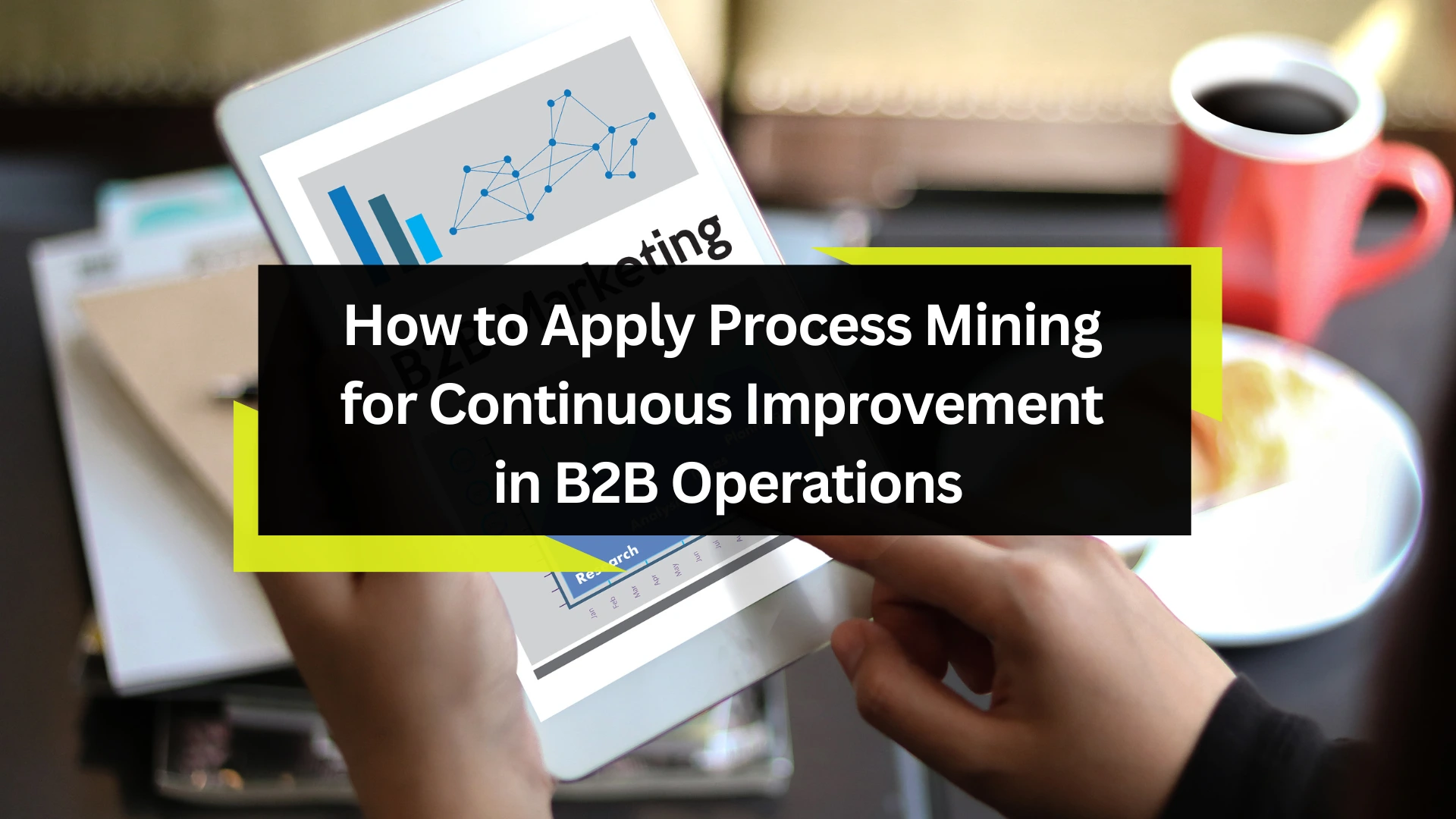How to Apply Process Mining for Continuous Improvement in B2B Operations

Process mining is one of the emerging approaches using process data to enhance operational performance and drive continuous improvement. This article explores the fundamental concepts, techniques applied within process mining, its application, and practices through which businesses can apply the same to sustain a path of operational enhancement.
What is Process Mining?
This refers to the set of techniques utilized for the analysis of operational processes based on event logs extracted from diverse information systems, including ERP and CRM systems. Process mining provides a real-time view of process execution, helping to identify areas for organizational improvement.
By combining data science with business process management, organizations can observe their true operational workflows as opposed to expected or ideal workflows, thus achieving greater transparency and accuracy than traditional mapping processes.
Key Technologies of Process Mining
Process mining employs several core technologies to help organizations analyze and improve business processes:
- Automated Process Discovery: Extracts and visualizes process models from event logs, allowing organizations to understand their current processes based on factual data.
- Conformance Checking: Analyzes discrepancies between actual process executions and predefined models, ensuring adherence to standards and requirements.
- Enhancement: Adds additional information to process models, such as cost and timing data, to enable more comprehensive analysis and performance improvements.
Benefits of Process Mining for B2B Operations
Implementing process mining offers numerous advantages for B2B operations:
- Enhanced Transparency: Provides an unbiased view of operational processes, revealing inefficiencies and compliance issues.
- Data-Driven Decision Making: Facilitates decision-making based on real data rather than assumptions.
- Continuous Monitoring: Tracks performance metrics continuously, identifying opportunities for optimization and automation.
- Improved Customer Experience: Streamlined processes contribute to higher service levels, boosting customer satisfaction and loyalty.
- Cost Optimization: Reduces operational costs by identifying and eliminating bottlenecks and inefficiencies.
Process Mining for Continuous Improvement
To implement process mining for continuous improvement in B2B operations, organizations can follow these steps:
1. Process Discovery
Use process mining tools to map out the current state of processes by analyzing event logs. This helps in visualizing workflows and identifying initial areas for improvement.
2. Process Analysis
Analyze the mapped processes to pinpoint weaknesses and bottlenecks, comparing them with desired performance levels. Root cause analysis can further help identify sources of inefficiencies.
3. Process Redesign
Revamp processes to address inefficiencies. This may involve standardizing workflows, automating tasks with RPA, or introducing new technologies to improve efficiency.
4. Implementation
Implement the redesigned processes, training stakeholders on new workflows and managing change to reduce resistance and ensure smooth adoption.
5. Continuous Monitoring
After implementation, monitor new processes continuously. Track KPIs and SLAs to assess effectiveness, and address emerging issues promptly.
6. Feedback Loop
Establish a feedback loop for continuous improvements based on real-world performance data. Teams can share experiences to facilitate ongoing process adjustments.
Applying Process Mining in Real-World Scenarios
Several organizations have successfully implemented process mining for continuous improvement:
- Manufacturing: An international manufacturer optimized procurement and production workflows with process mining, reducing procurement cycles by 30%.
- Sales Optimization: A software company used process mining insights to optimize its lead-to-order process, reducing qualification time by 40% and improving conversion rates by 25%.
- Finance Transformation: An international company streamlined its purchase-to-pay process, cutting payment processing time by half and improving supplier relationships.
Process Mining Challenges
While process mining offers substantial benefits, organizations may encounter certain challenges:
- Data Quality: High-quality data is essential; poor data can lead to inaccurate results.
- Change Management: Process changes may face resistance; effective communication and training are key to smooth implementation.
- Concept Drift: As processes evolve, continuous monitoring is necessary to adapt insights to changing conditions.
Conclusion
Process mining is essential for continuous improvement in B2B operations, providing objective insights into actual process execution. By systematically applying discovery through monitoring, businesses can optimize processes, reduce costs, and enhance customer satisfaction, fostering sustainable growth in an increasingly competitive landscape.

